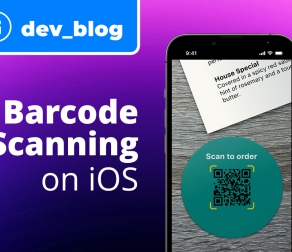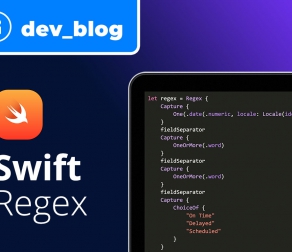According to a recent report on Edutechnica.com, more than 700 U.S. universities and colleges have implemented at least one mobile application. Large schools tend to have multiple apps, while smaller institutions may have a single all-purpose app. Interestingly, the study found that the most-adopted college mobile apps combine multiple capabilities beyond serving academic needs and also feature content segmentation by user. These findings point to a desire for more mobile use cases and personalized experiences.
With the continued focus on mobile listed as one of Education Dive’s 5 Trends Poised to Shake Up Higher Ed in 2018, now’s the time for higher education to deliver more mobile utility and make the mobile experience more personal. The smartest approach capitalizes on mobile’s hybrid physical and digital nature to serve students, faculty, staff and campus visitors more effectively.
“A smartphone is a digital device, but it moves through the physical world and includes highly specific geographic location technologies that collegiate mobile apps can leverage.”
– Phunware CEO Alan S. Knitowski (Read more)
Start with Mobile Wayfinding
Because they travel around with users, mobile devices have always been the perfect platform for location-based technologies. Since higher education campuses tend to be sprawling and difficult to navigate, nearly every campus app features a map.
PDF maps aren’t enough any more. Integrating mobile wayfinding capabilities can turn your campus app(s) into an interactive digital guide for students, instructors, staff and visitors, providing turn-by-turn directions from any starting point to any location, indoors and out. If your campus doesn’t have a good mobile wayfinding solution, consider adding one ASAP.
Your campus wayfinding solution should be built on a flexible platform that can work with a wide range of hardware partners and configurations, and preferably integrates well with the existing campus wireless infrastructure. Advanced mobile wayfinding also requires location-enabled hardware like Wi-Fi access points and physical or virtual Bluetooth beacons to provide greater location specificity and implementation flexibility.
The good news is, incorporating mobile wayfinding doesn’t have to be a forklift. You can start with static wayfinding (wayfinding that uses pre-programmed routes, rather than moving with each user in real time) building-to-building or only in key complexes, and expand from there with greater beacon or Wi-Fi density and location specificity. The best solutions make it easy to adjust maps as needed to route users around construction, storm-damaged areas, etc.—and to add, change or remove points of interest at any time.
Learn more about wayfinding and other location-based solutions from Phunware here.
VISIT THE LOCATION-BASED SOLUTIONS PAGE
Adding mobile wayfinding to your campus app can do more than just help students get to class:
- It can enhance security. Use day / time rules to direct app users via paths that are lighted at night. Highlight emergency call boxes as points of interest so users can navigate to them easily.
- It can increase accessibility. With the appropriate user onboarding process, you can provide wheelchair-accessible routing for students who need it. You can even offer relevant verbal cues for users who are blind or visually impaired.
- It can streamline traffic during large events (move-in day, football games, graduation). Anytime there are large numbers of visitors on campus, there are large numbers of people feeling lost and confused. Mobile wayfinding helps these visitors find their way confidently and with minimum frustrated wandering. You can make things easier by installing permanent or temporary points of interest to help these big-day visitors—for example, recycling bins and unloading stations for move-in day, picture spots for graduation or big football games, etc.
- It can help coordinate maintenance, deliveries and equipment requests. Campus staff can utilize the same mobile wayfinding platform to navigate the most efficient routes and save valuable time. Mobile equipment can be outfitted with beacon technology to facilitate asset tracking as well.
Next Steps: 3 Ways College Mobile Apps Can Get More from Location Technologies
Once you have a mobile platform and infrastructure to support location-based use cases, there’s so much more you can do. Here are three smart ideas (and they’re just for starters).
1. Location Sharing. This functionality allows app users to share their locations with each other (with permission control). It really comes in handy for retail, healthcare, and hospitality brands—and a surprising number of use cases for college campuses.
- Shuttle bus drivers can make their location publicly available so riders can see exactly how long they have to wait for the next bus.
- Professors, TAs and tutors can share their location with students during library or office hours, allowing students to message them directly or find them easily to meet in person. Groups such as recreational sports teams, lab groups, etc. can enable location-sharing for events and easily find each other, even in crowded libraries or intramural fields.
- Students in a potentially unsafe situation can share their location with the nearest security officer, who can navigate directly to the student by the fastest possible route.
Want to know more about location technology? Download our Location Tech 101 eBook to learn more about different location technologies and how they can work for your strategic goals.
2. Mobile Engagement. Universities can use location-based triggers to send messages to individual users or groups of users, and even to customize their in-app experience. Messages can be segmented by user, location, behavior and events.
- On move-in day, the school can send informative messages to new students and parents and trigger a “welcome to campus” experience in the app.
- The school can set geo-fences around buildings to trigger messages to students the first time they enter that location, or on special dates (homecoming, graduation, midterms…)
- School PR and sports marketing teams can promote events to students who are likely to attend. For example, say the Athletics department wants to fill the student section for a women’s volleyball game. The university could geo-fence nearby dorms, restaurants, coffee shops or bars and send a message to students within those geo-fences offering free admission. Analytics can also capture the number of attendees who received this message, proving attribution for the marketing effort.
- Student Health Services can message all students with vaccination reminders and other important health updates. When students come within a certain radius of the health building, when they leave their dorms, at orientation, etc.
- Student Life can promote involvement and retention with targeted messaging based on student behavior. For example, students who visit the rec center five times in a month might receive notification of relevant sports clubs they could join, whereas students who attend multiple events in the fine arts complex might receive notice of upcoming art shows. This approach is much more effective than the usual paper flyer or email because notifications can include a link to more information and schedules within the app.
These messages can get even more targeted with additional mobile data. For example, the Phunware platform touches hundreds of mobile apps and a billion devices worldwide each month. If a given device ID uses your college app and, for example, is a frequent golf mobile gamer, you can target that user with a message about an intramural golf team.
Interested in learning more? Download our Mobile Marketing Automation eBook for a helpful overview and key considerations for getting started!
3. Analytics. By collecting data over time about app user traffic patterns, university administration can understand what’s really happening across the campus. This data can assist in event planning, construction decisions, building updates, climate control and lighting decisions and more. It can also help the school better understand its student body and faculty.
Phunware can help you make the most of your mobile strategies.
Our team has years of experience with indoor and outdoor mobile wayfinding across all kinds of large facilities, including hospitals, airports and mixed-use developments. What’s more, Phunware’s expertise in mobile app lifecycle management and our full suite of mobile solutions means we’re an ideal partner for any organization’s mobile-first future.
To learn more about our offerings, download Phunware’s Higher Education Feature Sheet.










